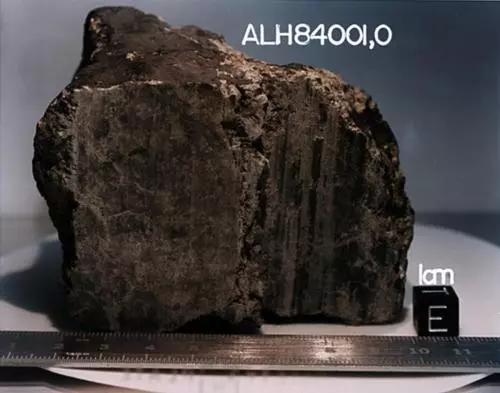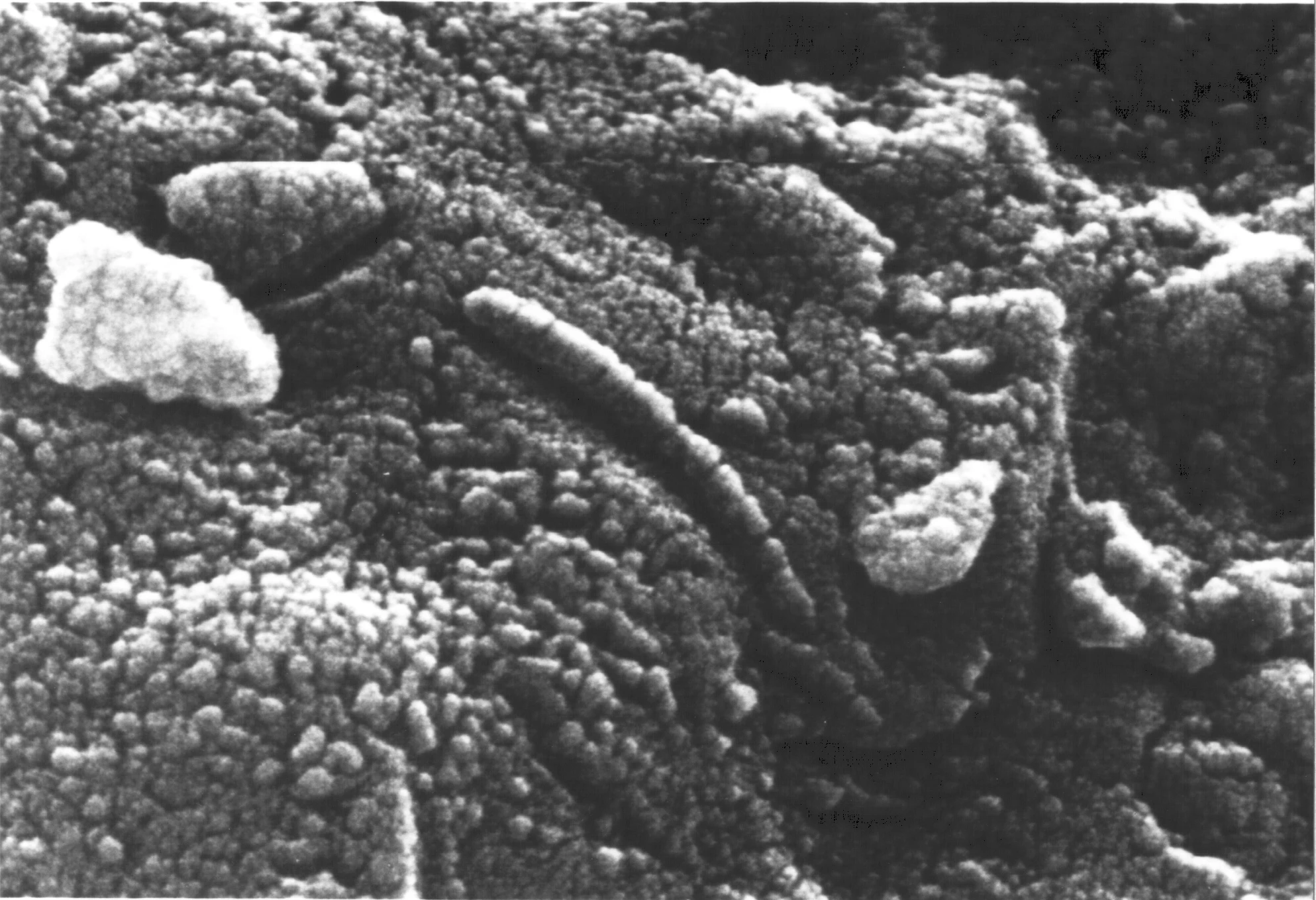A mystery that has puzzled scientists for over 25 years may finally have been solved as a new study led by the Carnegie Institution for Science's Andrew Steele suggests that signs of ancient life in a famous Martian meteorite may be due to geochemical processes.
In 1996, a team of NASA scientists led by astrobiologist David McKay caused a sensation when they published a report in Science claiming that a Martian meteorite found in Antarctica contained chemical compounds and formations that could have been formed by ancient life on the Red Planet billions of years ago.
The meteorite in question was called Allan Hills 84001 and was found in the Allan Hills region of the Far Western Ice Field in Antarctica on December 27, 1984 by a team of American meteorite hunters.
Analysis showed that it was a stony meteorite composed of orthopyroxene, chromite, maskelynite, and iron-rich carbonates – and that it contained organic molecules. Even more interesting, it was one of the shergottite–nakhlite–chassignite (SNC) group of meteorites, which means that it originally came from Mars.

The general theory is that Allan Hills 84001 formed under the Martian surface 4.091 billion years ago in the area of what is now the Eos Chasma in the Valles Marineris canyon. About 17 million years ago, a giant meteor impact blasted it off Mars, and it orbited the Sun until 13,000 years ago when it fell on the Antarctic ice cap.
Such Martian meteorites are rare, only 227 have been found, and their place of origin can be determined by matching the elements and isotopes in the meteorite against those found in the rocks and atmosphere of Mars.

But what sets Allan Hills 84001 apart is not only that it's one of the oldest Martian meteorites ever found, but also because it became the public focus of the question of whether life does or ever did exist on Mars.
In the 1996 paper, McKay and his team claimed to have found what appeared to be fossils of ancient nanobacteria, which are a theoretical form of bacteria that are smaller than many viruses. In addition, they found chemical compounds that they said were the result of organic decay.
At first, the hypothesis seemed plausible. There were structures in the meteorite that looked something like terrestrial bacteria, and some were even within the size range of some commoner species. There were also what looked like signs of bacterial colonies and carbonates that could have been produced by living organisms.
As a result, the Martian meteorite was soon the topic of the popular press and interest was so strong that even the US President felt the need to comment. Meanwhile, speculation ran wild for a time about whether such Martian organisms were the origin of life on Earth, and there were even some opinion pieces claiming that the findings posed an existential threat to some religions.

However, the NASA study didn't stand the test of time as processes were identified that could have produced the structures and the organic compounds, but supporters of the hypothesis remain to this day.
According to Carnegie, the latest study included findings from the Perseverance and Curiosity Mars rover missions that were combined with new analysis of the meteorite on a nanoscale. This included imaging isotopic analysis, and spectroscopy to learn more about the origin of the molecules and structures in Allan Hills 84001.
The team found that the key to unravelling the mystery was water. Four billion years ago, Mars was still a very wet planet that even had seas, and this water drove the geochemical processes that formed the meteorite.
In particular, one was a process called serpentinization, which is the interaction of iron- or magnesium-rich igneous rocks with circulating water at low temperatures and produces minerals like serpentine. The other is carbonization, which is when rocks come into contact with slightly acidic water containing dissolved carbon dioxide, resulting in carbonate minerals.
These processes may have taken place at the same time or separately, but in a relatively short period they would have produced organic materials and seemingly lifelike structures without the need for living organisms. However, though the meteorite mystery may have been solved, the processes also shed light on the origins of life in the solar system.
"These kinds of non-biological, geological reactions are responsible for a pool of organic carbon compounds from which life could have evolved and represent a background signal that must be taken into consideration when searching for evidence of past life on Mars," said Steele. "Furthermore, if these reactions happened on ancient Mars, they must have happened on ancient Earth, and could possibly explain the results we’ve seen from Saturn’s moon Enceladus as well. All that is required for this type of organic synthesis is for a brine that contains dissolved carbon dioxide to percolate through igneous rocks. The search for life on Mars is not just an attempt to answer the question ‘are we alone?’ It also relates to early Earth environments and addresses the question of ‘where did we come from?’"
The research was published in Science.
Source: Carnegie Science







